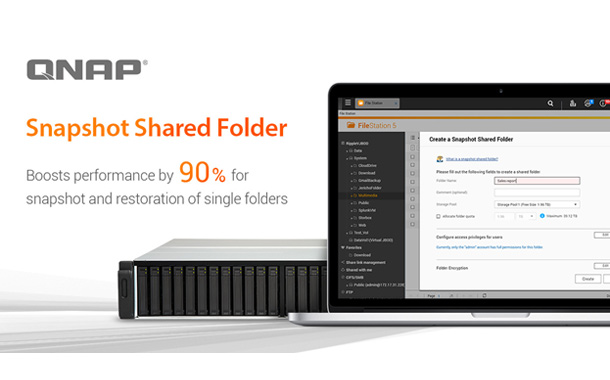Introduces “Snapshot Shared Folder” to Boost Performance by 90% for Snapshot and Restoration of Single Folders
Snapshots play an important role in data storage by enabling backup and recovery of data. QNAP Systems has reinforced the Snapshot function in QTS 4.3.3 (the QNAP NAS operating system) by adding the “snapshot shared folder” mechanism alongside the existing volume-based snapshot function.
With conventional volume-based snapshots, users can easily create snapshots for all shared folders on a volume, and restore the entire volume within minutes. However, this method requires more time to restore a specified shared folder. QNAP introduces the snapshot shared folder to contain only one shared folder on a single volume, reducing the time of recovering single folders to a few seconds.
In a test conducted by QNAP, restoring a 300 GB shared folder from a snapshot takes around 30 minutes. Restoring the same shared folder from a snapshot shared folder only takes 3 minutes. “This test demonstrates that using a snapshot shared folder is more suitable for data of collaborative projects or backups that demand faster recovery times,” said Ripple Wu, Product Manager of QNAP.
Snapshots are essential for NAS data protection, providing modern businesses with modern solutions for backup and restoration. Snapshots are also dependable methods for saving data with the growing threat of ransomware. QNAP aim to constantly enhance snapshot management, including adding the ability to initiate Snapshot Manager in File Station for creating snapshots, and identifying differing content using the snapshot overview.
System requirements for snapshot shared folder:
- QTS 4.3.3 (or later)
- QNAP NAS with at least 4GB RAM
- Supported models: TS-x51, TS-x53, TVS-x63, TVS-x70, TVS-x71, TVS-x73, TS/SS-x79, TVS-x80, TVS-x82, TES-x85 and TDS-x89


